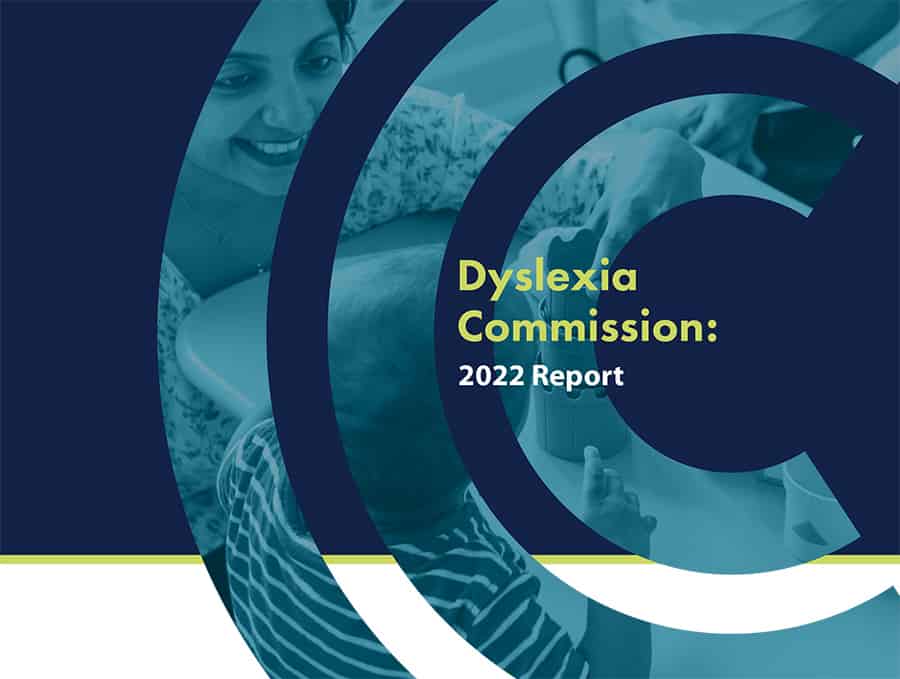Every child in every school should be introduced to assistive tech, report suggests

Children in every school should be introduced to assistive technology to help establish a common ground and equal footing among students and help raise awareness of the benefits of incorporating technology within mainstream teaching and learning.
That is a recommendation from a recent report by Curia and British Dyslexia Association titled ‘Dyslexia Commission: 2022 report’. The commission’s goal Its objective is to consider the application of pre-existing policies that impact the lives of dyslexic people, drive down inequalities, and improve outcomes.
It also includes several assistive technology recommendations to improve outcomes for people with dyslexia, especially in education settings.
One of the key assistive technology suggestions from the report is introducing assistive technology to every child in school.
Alongside raising awareness of assistive technologies, the benefits of this early-years intervention carry into adulthood, where a collective understanding of the benefits of assistive technology in education translates into greater availability of assistive technology across workplaces, the report suggests. This would create a more equitable environment throughout an individual’s life and reduce inequalities in social and public spaces.
Curia and British Dyslexia Association also believe that teachers should receive training on assistive technologies that children with special educational needs and disabilities (SEND) might use in the classroom. This will help facilitate more efficient teaching through more inclusive practices.
Recently, British Dyslexia Association described the UK Government’s SEND and alternative provision (AP) improvement plan as a “missed opportunity” for assistive technology. It argued that while the government’s plan to roll out assistive technology training to school staff in 150 schools is a welcome step, this initiative should be rolled out to all schools rather than a limited number.
The commission further advises that teachers are consistently assisted through training in understanding the appropriate use of assistive technology at the primary literacy level. This will help explicitly target learning difficulties at a primary stage, it states. By equipping students and teachers with assistive measures from an early development stage, this would be a helpful measure in ensuring that learning difficulties do not remain undiagnosed until later stages.
Another important part of the report was session three, where sector experts presented evidence to, and shared insights with, the commission about improving access and uptake of the latest assistive technologies by dyslexic people.
Ruth-Ellen Danquah, Chief Innovation Officer at Neurodivergent, discussed the issue of organisational resistance to assistive technology in the workplace. She felt that it is crucial for organisations to adapt and adopt the latest technologies. In her capacity to evaluate workplace assessments, she observed that workplace assistive technologies were typically outdated.
Assistive technology as a discreet equaliser in the classroom was also explored in session three of the commission. Christine Franklin, an independent researcher, introduced Scanning Pens in a classroom setting to all children to establish a common ground.
In doing this, she believed that assistive technology would become normalised uniformly for generations who have seen and interacted with said technology from an early age. She argued that the next generation of policymakers will have a first-hand understanding of the needs and the importance of resource allocation for assistive technology in all sectors if this approach is implemented.
Additionally, Marius Frank, Head of Education at Microlink, spoke about the impact of assistive technology funded by the Department for Education (DfE).
Frank stated that one of the biggest changes he saw was the reception of assistive technology by teachers. He mentioned the initial reluctance of teachers to adopt the technology in class, which was soon replaced by a sense of familiarity with the technology.
This helped teachers appreciate all that they could do with this resource and how it could be applied to their classroom as an additional beneficial strategy to improve education outcomes.
Last year, DfE published an interesting evaluation report about an assistive technology training pilot that took place in schools in the first quarter of 2022. Find out more about the assistive technology training pilot and the outcomes here.

